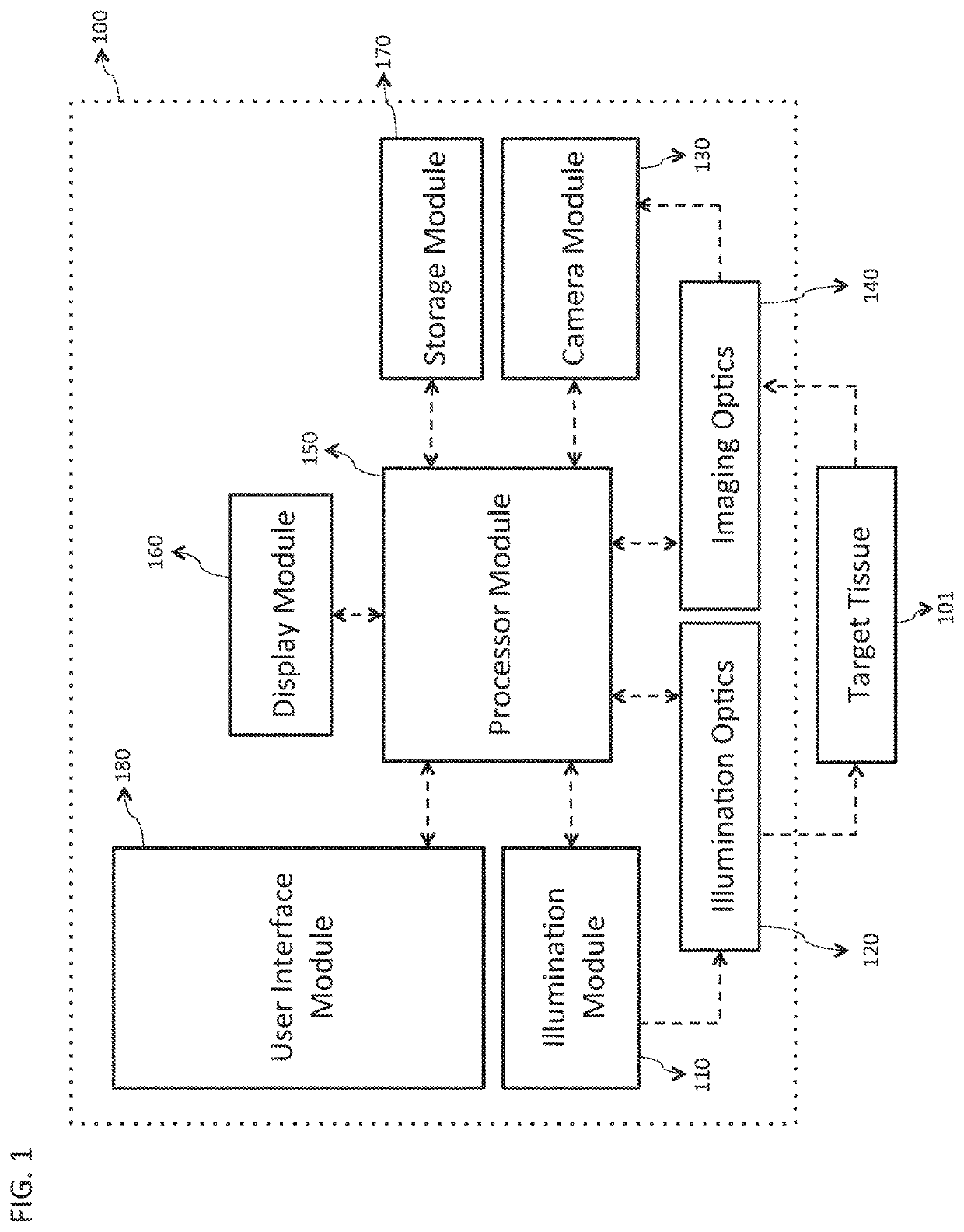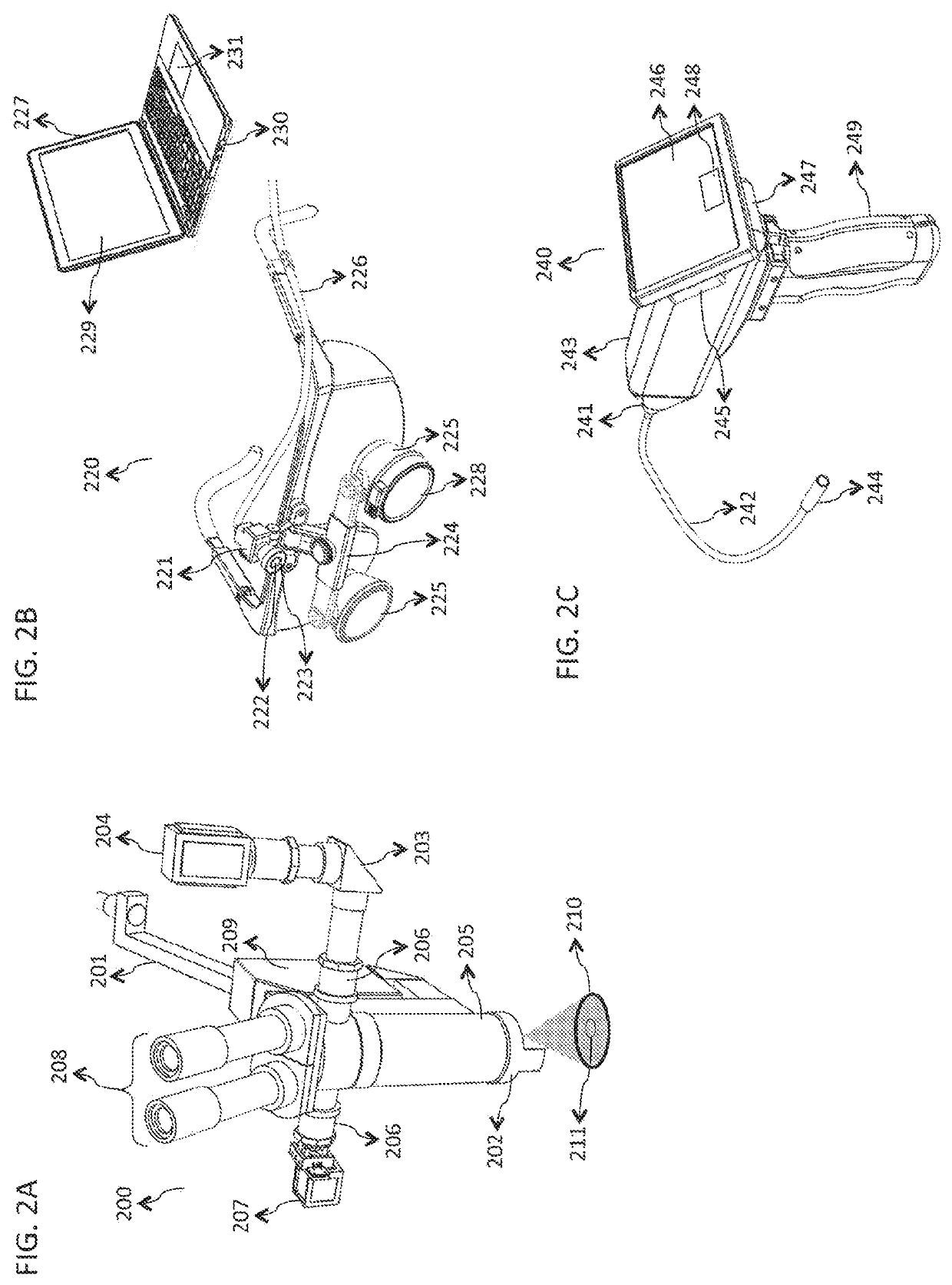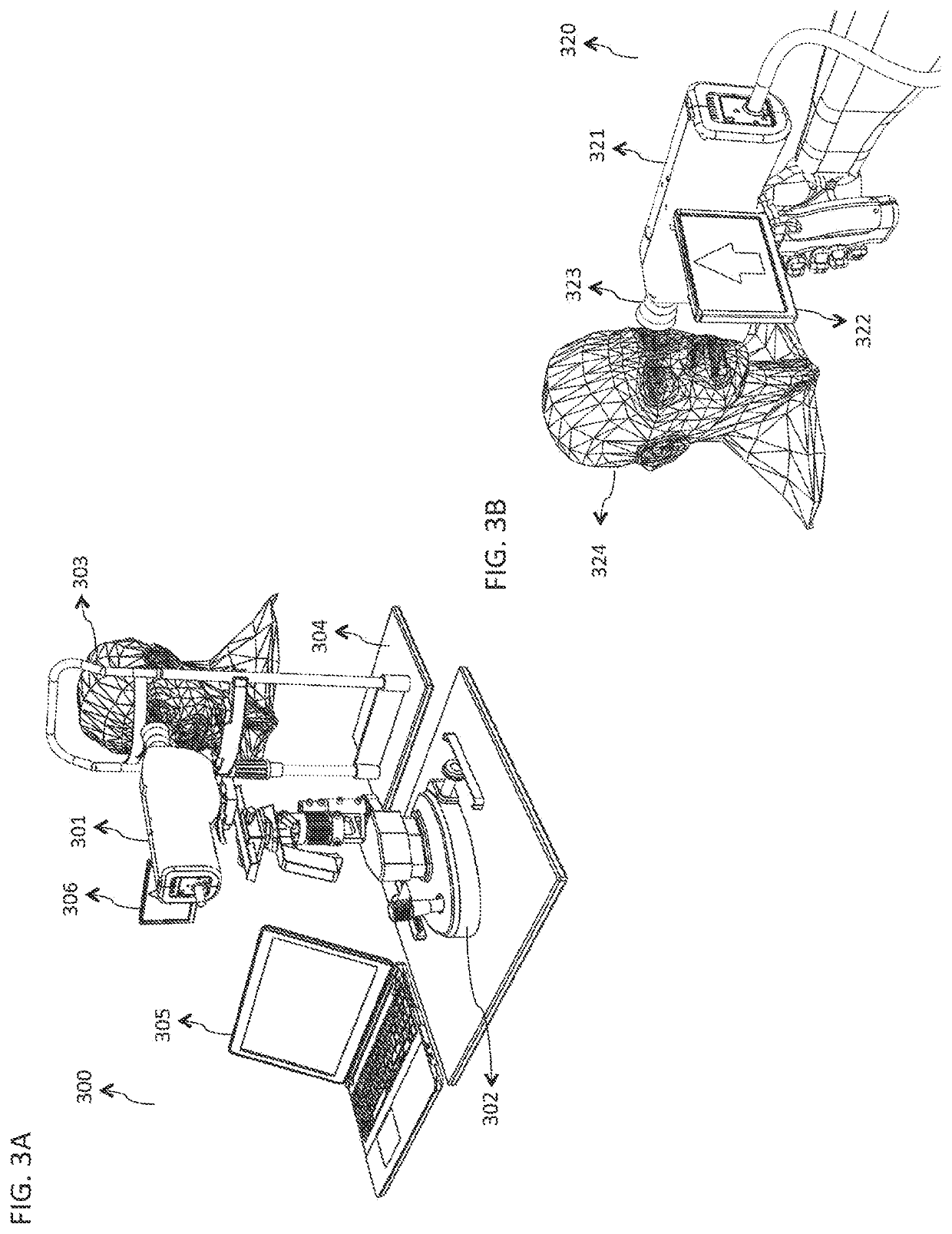System and method for rapid examination of vasculature and particulate flow using laser speckle contrast imaging
a contrast imaging and vasculature technology, applied in the field of vascular imaging technologies and methods, can solve the problems of increasing vision loss and progression toward blindness, difficult for surgeons to use preoperatively obtained images of the brain for anatomical landmarks, and no single method is considered adequate in all scenarios, so as to relieve carpel tunnel syndrome, improve the efficiency and effectiveness of cerebrovascular imaging, and reduce the risk of damage to the vascular anatomy.
- Summary
- Abstract
- Description
- Claims
- Application Information
AI Technical Summary
Benefits of technology
Problems solved by technology
Method used
Image
Examples
Embodiment Construction
[0057]The following detailed description of the present subject matter refers to the accompanying drawings that show, by way of illustration, specific aspects and embodiments in which the present subject matter may be practiced. These embodiments are described in sufficient detail to enable those skilled in the art to practice the present subject matter. The invention can assume various embodiments that are suitable to its specific applications.
[0058]FIG. 1 is a block diagram illustrating an embodiment of a system 100 for rapid examination of particulate flow in a target tissue 101. In various embodiments, the target tissue 101 comprises any tissue, organ, or organ system of any human or animal biological system, including but not limited to the cornea, sclera, retina, epidermis, dermis, hypodermis, skeletal muscle, smooth muscle, cardiac muscle, brain tissue, the spinal cord, the stomach, large and small intestines, pancreas, liver, gallbladder, kidneys, endocrine tissue, and assoc...
PUM
 Login to View More
Login to View More Abstract
Description
Claims
Application Information
 Login to View More
Login to View More - R&D
- Intellectual Property
- Life Sciences
- Materials
- Tech Scout
- Unparalleled Data Quality
- Higher Quality Content
- 60% Fewer Hallucinations
Browse by: Latest US Patents, China's latest patents, Technical Efficacy Thesaurus, Application Domain, Technology Topic, Popular Technical Reports.
© 2025 PatSnap. All rights reserved.Legal|Privacy policy|Modern Slavery Act Transparency Statement|Sitemap|About US| Contact US: help@patsnap.com



